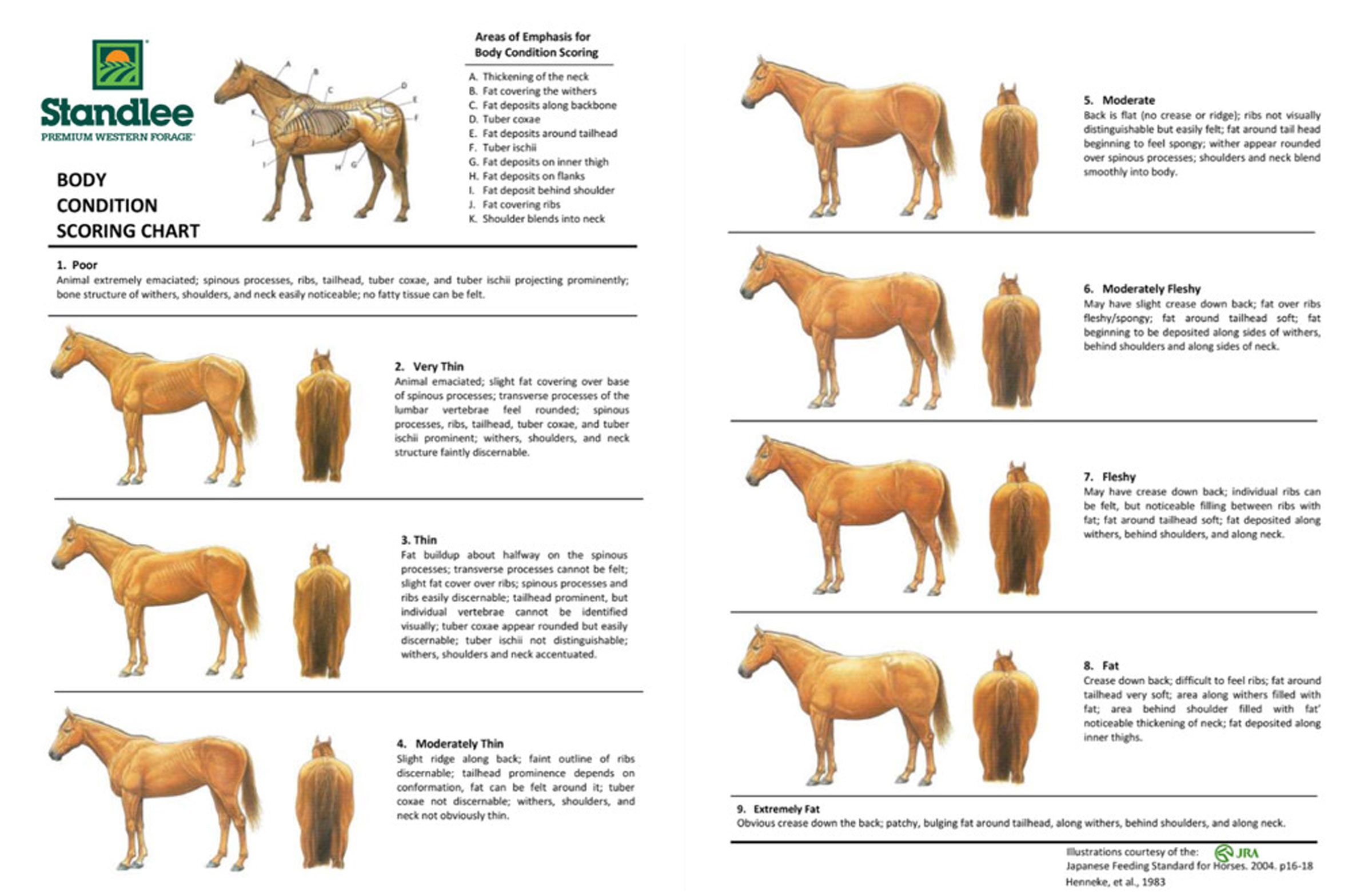
Effectively managing overweight and underweight horses begins with understanding the animal’s body condition score (BCS).
Links in articles are part of an Amazon Affiliate program that provides income to support this brand. Links are chosen by our editors.
The BCS is used for estimating the amount of fat on a horse’s body. The system was developed by Don Henneke, PhD, while he was at Texas A&M University. The BCS is a good tool to help your owners and clients understand where their horses are (or should be) in their body condition/weight.
“[The BCS] is used to determine if a horse is overweight or not,” explained Megan Shepherd, DVM, PhD, DACVN (Diplomate American College of Veterinary Nutrition). She is a clinical assistant professor in nutrition at the Virginia-Maryland College of Veterinary Medicine (vetmed.vt.edu/vth/services/nutrition).
The Henneke body condition score system assigns a score from 1 to 9. It takes into account visual and palpable fat on six major points: the neck, withers, shoulder, ribs, loin and tailhead. In general, a horse that scores 5 is considered at an ideal weight for most breeds and disciplines. A horse rated 1 through 4 is classified as emaciated to moderately thin. Those rated 6 to 9 are labeled as moderately fleshy to obese.
The horse’s activity level and age should also be taken into consideration. An athletic horse that is a BCS of 4 might be perfect, but a broodmare might need to be at a BCS of 6.
“Athletic horses may do best when their ribs are faintly visible, provided they have a good top line/muscle mass, because the leaner they are, the less stress and strain there is on their musculoskeletal systems,” Shepherd said.
However, a pasture pet will be fine if its ribs are easy to feel with light pressure—but they don’t have to be visible. For a broodmare, it can be easier to get her pregnant if she has a thin layer of spongy fat over her ribs.
Conducting a BCS exam can be as quick as running your hands over each of the six locations included in the BCS to make sure there isn’t too much or too little fat. A body weight tape can also be a useful tool.
“Most importantly, though, it’s making sure the horse is at the correct weight for its size and activity level,” Young added.
Determining a horse’s BCS is only a starting point. “There are individual variations in each horse’s metabolism, with some being easier keepers than others,” said Clair Thunes, PhD, an independent equine nutritionist based in California (summit-equine.com). “If all horses in a barn are fed the same, some will receive more nutrition than they need, while others will not receive enough.”
Check out these equine nutrition books:
Introduction to Horse Nutrition
Equine Applied and Clinical Nutrition
Equine Nutrition and Feeding
Horse Health and Nutrition for Dummies
Understanding Equine Nutrition


